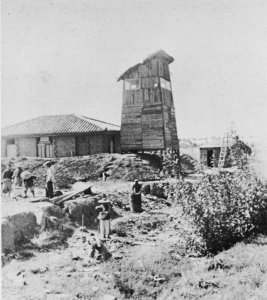![]() The Pacific War Online Encyclopedia
The Pacific War Online Encyclopedia
|
| Previous: Kunikata Keizo | Table of Contents | Next: Kunomura Todai |

U.S. Army. Via ibiblio.org
Kunming (102.706E 25.05N) has been settled off and on since ancient times, but the present city began as the fortress town of Yunnanfu in the 19th century. It was established to prevent non-Chinese from settling in southwest China, being the most important center of communications in the region. A railroad from the Indochina ports reached the city in 1910, increasing its prosperity. The present name of Kunming was adopted in 1912.
When war broke out between China and Japan in 1937, Kunming became a refugee
center, in spite of occasional air attacks (beginning on 27 September 1938). The ancient route to Burma
was
reestablished, using vast quantities of impressed labor, and the new
Burma Road
became China's most important supply
route to the outside world. So important was the road that, prior to the attack on Pearl Harbor, the U.S. Army considered a proposal to reinforce the American Volunteer Group at Kunming with U.S. aircraft from the Philippines in the event of a Japanese attack on the city. Following the Japanese invasion of Burma, the AVG (later redesignated 14 Air Force) made Kunming its principal base. The city was also the principal base of the OSS in China, and OSS provided 14 Air Force with much of its targeting intelligence.
The city was not seriously threatened by the Japanese before November 1944, when the astounding success of the Japanese Ichi-go offensive posed the threat of an advance from Hengyang. However, unknown to the Allies, the Japanese forces in China were near exhaustion and there were no plans for an advance on Kunming.
The
local warlord, Lung Yun,
jealously guarded his autonomy from the central government. A
consequence of this was the development of a large scholarly community
that was critical of the Kuomintang
and argued for less emphasis on the practical value of scholarship and
more on its theoretical basis.
References
Craven and Cate (1947; accessed 2012-5-22)
"Office of Strategic Services (OSS) Organization and Functions" (1945-6; accessed 2012-5-22)
Romanus and Sunderland (1950; accessed 2012-5-22)
The Pacific War Online Encyclopedia © 2007, 2009, 2012, 2015 by Kent G. Budge. Index